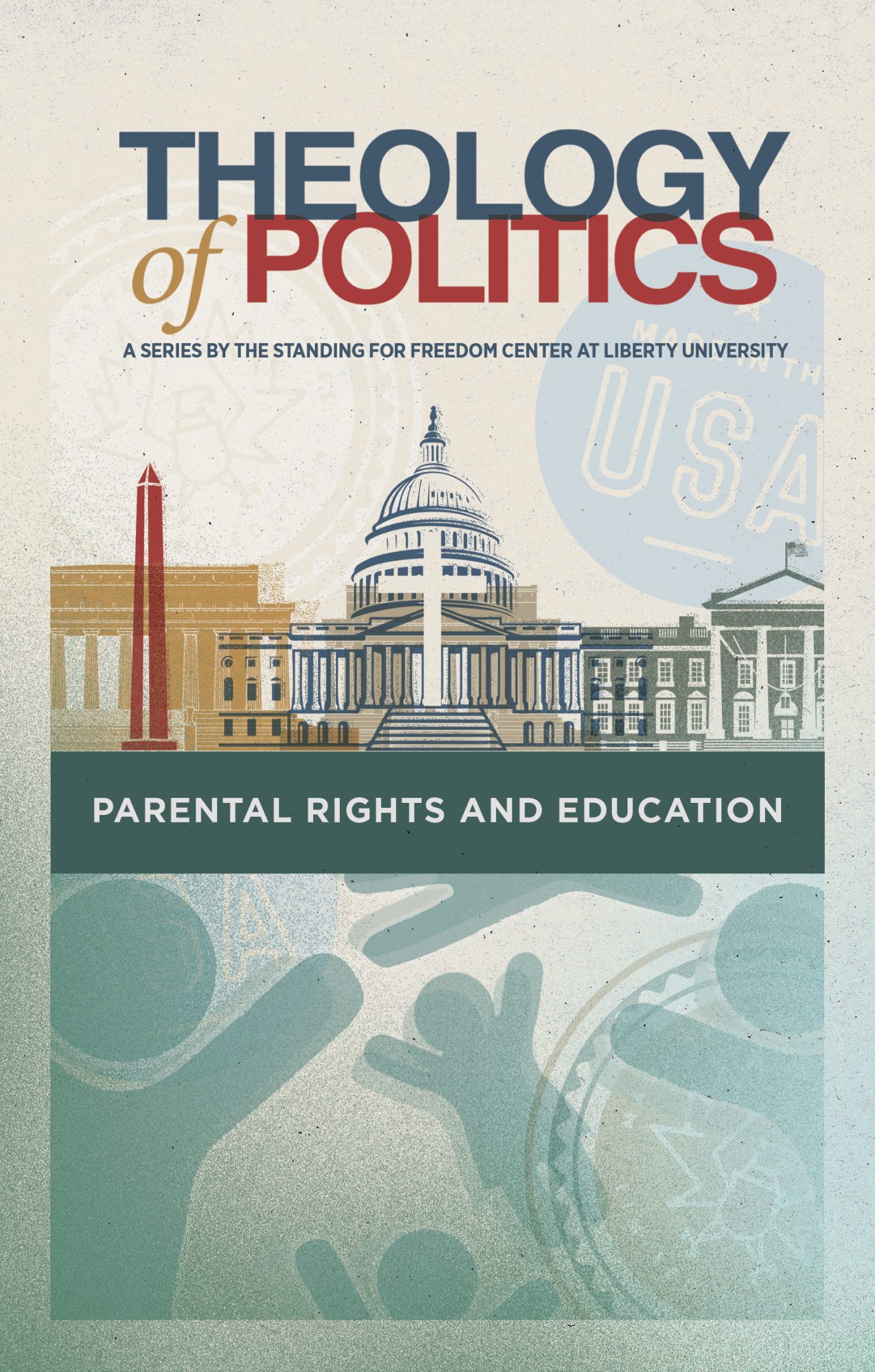


Get a free copy of Parental Rights & Education when you subscribe to our newsletter!

“For a man to try to become a woman is like blue demanding to be red, or for odd to be even. If blue were to get its wish, it would cease to be blue. Thus, such a demand, such an effort, such a ‘liberty,’ is instead an act of self-annihilation. The thing that is, that was, that should be, would cease to exist. And it is a Sisyphean undertaking, ultimately impossible in the end.”
–WILLIAM WOLFE
This is the second article of a three-part series exposing one of the most fundamental lies of the transgender agenda and providing a biblically-based, Christian worldview-informed response. You can read part 1 here and part 3 here.
In Genesis 1:27, we find the crucial starting point to all of our most confusing questions about sex and gender. Yes, it’s just one verse. But one verse is all we need to answer the question, “Can a man become a woman?” It reads:
“God created mankind in his own image, in the image of God he created them; male and female he created them.”
“Male and female He created them.” Simple yet profound. This means that God is the author of our biological sex. There are men and there are women. A man cannot be anything other than a man nor can a woman be anything other than a woman. This is our nature as created and embodied humanity. But what happens when we try to destroy this essential element of our very beings? We engage in an attempt at disastrous self-annihilation.
As the atheist and evolutionary biologist Colin Wright once put it:
“I’m frequently asked why I focus so much on the nature of biological sex. It’s because in my view this may be reality’s last stand. If this undeniable fact can be denied en masse, then we become hostages to chaos. We simply cannot afford to lose our collective tether to reality.”
It’s fascinating that even atheists can understand this. But upon further reflection, it’s entirely understandable because the incontrovertible nature of our biological sex is also revealed in the natural law.
To better understand what I mean by that, let’s consider both creation order and “colors” in the work of J. Budziszewski, a professor of government and philosophy at the University of Texas, with an emphasis on the natural law tradition. Natural law, or, if you prefer, “creation order,” is simply the “notion that there is, because of the divine intellect, a natural order within the created world by which each and every created being’s goodness can be objectively judged, both on the level of being (ontological goodness) and, for human-beings specifically, on the level of human action (moral goodness).”[1]
A Christian natural law theory takes God’s creation of the universe and mankind as its starting point. By grounding the natural order in the divine wisdom and purpose of the Creator, we recognize that God has created all things with an inherent sense of being and a purpose — including, most notably, the crown jewel of creation and the mirror of God: mankind.
In his book On the Meaning of Sex, Budziszewski aims to explain why sex has inherent meaning. Along the way, however, he elucidates the philosophical core of the point I am trying to make. He writes:
“Human nature is not a master, distinct from us, reducing us to bondage. It is the deep structure of what we really are. The fact that we are not free to be other than human doesn’t mean that we aren’t free; how could it truly be freedom to be false to ourselves? Blue may as well demand the liberty to be red, odd the liberty to be even, vegetable the liberty to be mineral. That kind of liberty is just the liberty of self-annihilation.”[2]
At the heart of transgenderism is the demand for liberty that does not exist: the liberty for a man to be a woman or a woman to be a man. Why? Because such a “liberty” is an effort to unmake oneself. This is not “liberty” at all. It is a license. Even worse, it is an effort to take a license that doesn’t exist.
Human nature, as expressed in the duality of men and women, is the “deep structure of what we really are.” You are either a man or a woman. You cannot be anything else. Of course, as Christians, we recognize that we are not only bodies, we are embodied souls. But our embodiment is not tangential.
As Gregg R. Allison explains in Embodied: Living as Whole People in a Fractured World, “embodiment is an essential feature of God’s creation of us as human beings.”[3] This embodiment is, from the moment of conception, expressed in the sexed nature of male and female.
Author Ryan Anderson also underscores the reality of the male/female sexual dichotomy when he writes, “Our genetic code determines our sexed body” and “the conceptual distinction between male and female based on reproductive organization provides the only coherent way to classify the two sexes.”[4]
The point here, which could be made at much greater length and with endless amounts of scientific evidence and philosophical arguments, is simply this: For a man to endeavor to become a woman is the same thing as blue demanding to be red, or for odd to be even. If blue were to get its wish, it would cease to be blue. Thus, such a demand, such an effort, such a “liberty,” is instead an act of self-annihilation. The thing that is, that was, would cease to exist. It is a Sisyphean undertaking, impossible in the end.
The process, therefore, doesn’t result in greater freedom, but deepening bondage to a disastrous subversion of nature; since “true freedom doesn’t lie in being false to ourselves, then as the old adage claims, it must lie in being true to ourselves.”[5]
This is a very important lesson for Christians to understand in the transgender debate. It has far-reaching implications both in the Church and society. One of those is simply this: The truth is that an individual who struggles with gender dysphoria — that is, “when one’s transgender experience leads to psychological/emotional distress” — will never truly be helped by an affirmation or perpetuation of the dysphoria, whether in word, deed, or treatment.[6]
Every step taken away from aligning their perceived identity with their embodied reality, such as cross-dressing, taking puberty blockers or cross-sex hormones, adopting cross-sex pronouns, changing one’s name or identity, or, most drastically, undergoing a surgical transition, is a step further away from their true nature and from the necessary embrace of the ontological goodness of their embodied sex.
It is an effort to subvert, to bend, to refashion one’s biological reality contrary to the pattern determined by the hand of the Creator. It is an act of human apotheosis, daring to contravene one’s very body, endeavoring to establish the supremacy of the psychological self and the will over nature. It is, in many ways, the ultimate act of physical rebellion against the Creator God.
And it just does not work. As philosopher Christopher Tollefsen explains, “Every surgical attempt to change sex must involve a mutilation of the bodily capacity that identifies one’s true sex.”[7]
This realization, that transgenderism is mutilation, is echoed by Steven Richards, a male “detransitioner” who writes under the pseudonym of “Tree.” Last year he published a profoundly moving account of how he got trapped in the destructive currents of the transgender movement, which led him all the way to having an elective orchiectomy (surgical removal of the testicles).
Tree realizes, in retrospect, what a mistake it was. He didn’t need to be chopped up; he needed someone to talk him down. “I needed serious psychiatric help and deprogramming…I felt that by removing a part of myself I would become whole. Years of online grooming and ideological brainwashing had made me delusional, but no one pushed back on it.”
What a ringing indictment — “no one pushed back.” He continues: “The doctors were happy to go through with it, and they had medical degrees. So I took two weeks off work, went into the hospital…”
He immediately regretted the surgery. But there was no going back.
Reflecting on the outcome, he writes:
“A transition is never done. There are always more surgeries, new treatments, more work to do. You can never carve away enough pieces of yourself to be satisfied. You can never rid yourself of the fundamental facts of your own biology. You can never be cleansed of sin. The end goal of transition isn’t self-actualization. It’s self-annihilation.”
Now, I’m pretty confident that Steven (Tree) wasn’t reading Budziszewski, but the fact that he comes to the very same conclusion, and uses the same word, “self-annihilation,” as the professor speaks to the universal reality of this truth. We cannot transcend our embodied nature as men and women. We cannot undo this reality. This is how God made us, how He made humans. We may kick against the goads of creation, but surely we cannot topple the architecture of the One who laid the foundations of the heavens and the earth.
And we cannot redeem our fallen nature, as sinners, without humbly asking for a heart of flesh that only comes through the new birth by the Spirit. In that sense, Steven (Tree) was onto something. He needed to be remade, reborn, not on the outside but from within.
To miss this grave distinction and to try to undo the embodied reality of being a man or woman is to pursue not a path towards becoming a new creation but rather an act of undoing. Far from self-fulfilling, it is futile. Far from self-actualization, it is indeed self-annihilation.
I fear the annihilators have already gained much ground. Still, Christ is King, and we are His subjects, willing or not. He is a gracious King who can bring restoration now, even as we await future redemption. After all, this is the King who had a word of hope specifically for eunuchs, to those like Tree, who feel “cut down” or “cut off.” A word of promise that they can, in fact, be made whole. Perhaps not entirely in this life, but most assuredly in the life to come, in eternity:
“Let no foreigner who is bound to the Lord say, ‘The Lord will surely exclude me from his people. And let no eunuch complain, ‘I am only a dry tree.’ For this is what the Lord says: ‘To the eunuchs who keep my Sabbaths, who choose what pleases me and hold fast to my covenant—to them I will give within my temple and its walls a memorial and a name better than sons and daughters; I will give them an everlasting name that will endure forever.’”
–Isaiah 56:3-5
To learn how Christians should respond to transgenderism, read part 3 of this series, found here.
Follow William on Twitter! @William_E_Wolfe
Ready to dive deeper into the intersection of faith and policy? Head over to our Theology of Politics series page where we’ve published several long-form pieces that will help Christians navigate where their faith should direct them on political issues.
[1] Andrew Fulford and David Haines, Natural Law: A Brief Introduction and Biblical Defense (Lincoln, NE: The Davenant Press, 2017), ii.
[2] J. Budziszewski, On the Meaning of Sex (Wilmington, DE: ISI Books, 2012), 7-8.
[3] Gregg R Allison, Embodied: Living as Whole People in a Fractured World (Grand Rapids: Baker Books, 2021), 37.
[4] Ryan T. Anderson, When Harry Became Sally: Responding to the Transgender Moment (New York: Encounter Books, 2018), 78-79.
[5] Budziszewski, On the Meaning of Sex, 8.
[6] James K. Beilby and Paul Rhodes Eddy, “Glossary,” in Understanding Transgender Identities: Four Views, eds. James K. Beilby and Paul Rhodes Eddy (Grand Rapids: Baker Academic, 2019), 240.
[7] Anderson, When Harry Became Sally, 101.